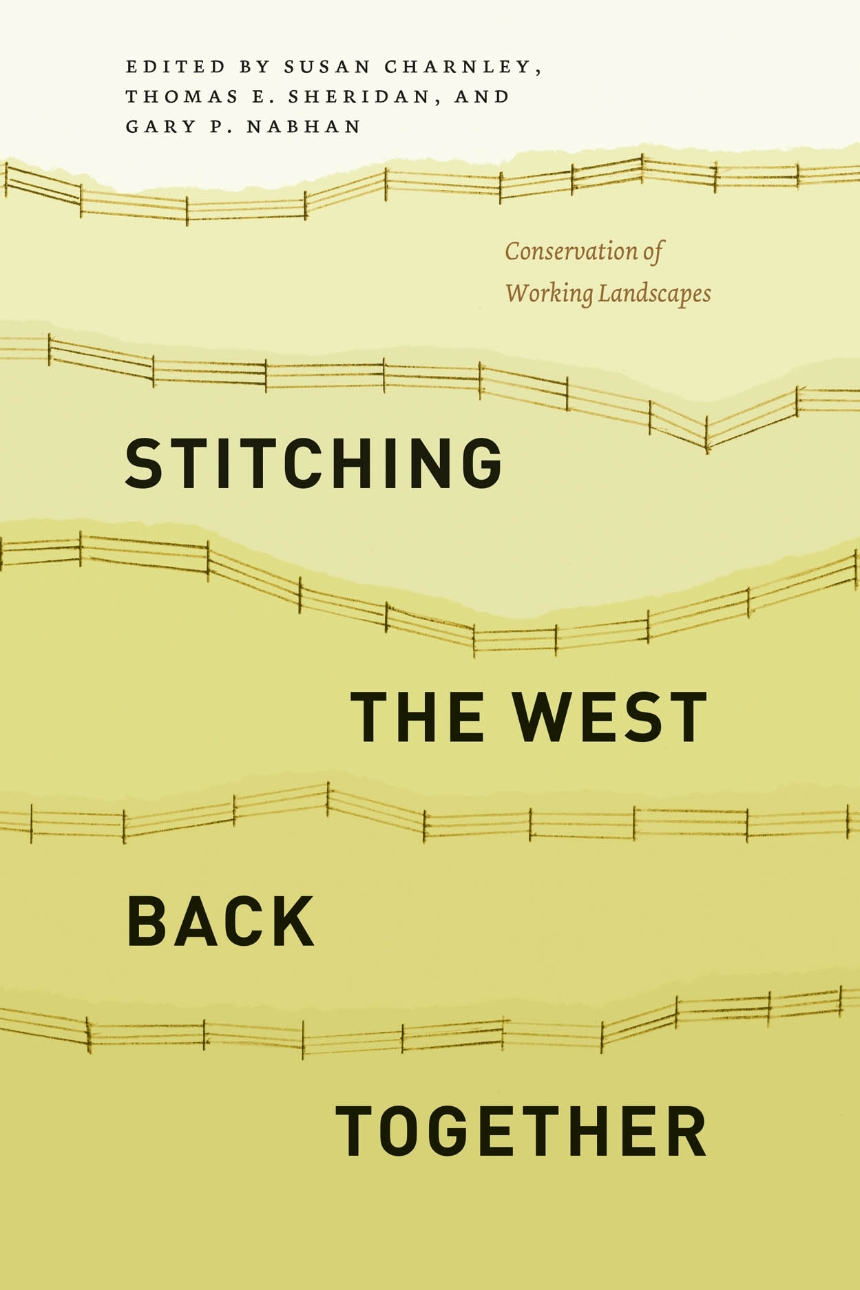Stitching the West Back Together
Conservation of Working Landscapes
Stitching the West Back Together
Conservation of Working Landscapes
Featuring contributions from an impressive array of scientists, conservationists, scholars, ranchers, and foresters, Stitching the West Back Together explores that expanded, inclusive vision of environmentalism as it delves into the history and evolution of Western land use policy and of the working landscapes themselves. Chapters include detailed case studies of efforts to promote both environmental and economic sustainability, with lessons learned; descriptions of emerging institutional frameworks for conserving Western working landscapes; and implications for best practices and policies crucial to the future of the West’s working forests and rangelands. As economic and demographic forces threaten these lands with fragmentation and destruction, this book encourages a hopeful balance between production and conservation on the large, interconnected landscapes required for maintaining cultural and biological diversity over the longterm.
352 pages | 26 halftones, 5 tables | 6 x 9 | © 2014
Summits: Environmental Science, Law, and Policy
Biological Sciences: Conservation, Ecology
Earth Sciences: Environment
Geography: Environmental Geography
Political Science: Public Policy
Reviews
Table of Contents
Foreword Charles F. Wilkinson
Introduction Susan Charnley, Thomas E. Sheridan, and Gary P. Nabhan
Part 1 The Importance of ConservIng Western WorkIng Landscapes
Chapter 1 A Brief History of People and Policy in the West
Thomas E. Sheridan and Nathan F. Sayre
Chapter 2 Status and Trends of Western Working Landscapes
Susan Charnley, Thomas E. Sheridan, and Nathan F. Sayre
Chapter 3 The Biodiversity That Protected Areas Can’t Capture: How Private Ranch, Forest, and Tribal Lands Sustain Biodiversity
Gary P. Nabhan, Richard L. Knight, and Susan Charnley
Part 2 CollaboratIve Conservation
Chapter 4 Beyond “Stakeholders” and the Zero- Sum Game: Toward Community- Based Collaborative Conservation in the American West
Thomas E. Sheridan, Nathan F. Sayre, and David Seibert
Spotlight 4.1 Historic Precedents to Collaborative Conservation in Working Landscapes: The Coon Valley “Cooperative Conservation” Initiative, 1934
Curt Meine and Gary P. Nabhan
Chapter 5 The Quivira Experience: Reflections from a “Do” Tank Courtney White
Spotlight 5.1 Grass- Fed and Grass- Finished Livestock Production: Helping to Keep Working Landscapes Intact
Gary P. Nabhan, Carrie Balkcom, and Amanda D. Webb
Chapter 6 Place- Based Conservation Finds Its Voice: A Case Study of the Rural Voices for Conservation Coalition
Maia Enzer and Martin Goebel
Part 3 Case Studies of WorkIng Forests
Chapter 7 Swan Story
Melanie Parker
Spotlight 7.1 Arcata Community Forest
Mark Andre
Chapter 8 Taking a Different Approach: Forestland Management in the Redwood Region
Mike Jani
Spotlight 8.1 The Conservation Fund’s Garcia River Forest, California
Chris Kelly
Chapter 9 Stewardship Contracting in the Siuslaw National Forest
Shiloh Sundstrom and Johnny Sundstrom
Spotlight 9.1 Stewardship Agreements: The Weaverville Community Forest, California
Pat Frost
Part 4 Case Studies of WorkIng Ranches
Chapter 10 Lava Lake Land & Livestock: The Role of Private Landowners in Landscape- Scale Conservation
Michael S. Stevens
Spotlight 10.1 Country Natural Beef
Susan Charnley and Sophia Polasky
Chapter 11 Conservation and Development at Sun Ranch: The Search for Balance in the U.S. West
Roger Lang, William H. Durham, and Josh Spitzer
Spotlight 11.1 The Madison Valley Ranchlands Group
Thomas E. Sheridan
Chapter 12 Integrating Diversified Strategies on a Single Ranch: From Renewable Energy and Multiple Breeds to Conservation Easements
Dennis Moroney
Spotlight 12.1 Private Land Conservation Trends in the Western United States
Jon Christensen, Jenny Rempel, and Judee Burr
Part 5 EmergIng Approaches to ConservIng WorkIng Landscapes
Chapter 13 The Sonoran Desert Conservation Plan and Ranch Conservation in Pima County, Arizona
Thomas E. Sheridan
Spotlight 13.1 Ranching and the “Death Tax”: A Matter of Conservation as Well as Equity
Thomas E. Sheridan, Andrew Reeves, and Susan Charnley
Chapter 14 Payments for Ecosystem Services: Keeping Working Landscapes Productive and Functioning
Gary P. Nabhan, Laura López- Hoffman, Hannah Gosnell, Josh Goldstein, Richard Knight, Carrie Presnall, Lauren Gwin, Dawn Thilmany, and Susan Charnley
Spotlight 14.1 The Conservation Reserve Program
Steven E. Kraft
Conclusions and Policy Implications
Thomas E. Sheridan, Gary P. Nabhan, and Susan Charnley
Acknowledgments
Contributor Biographies
Summits Board of Advisers
Index
